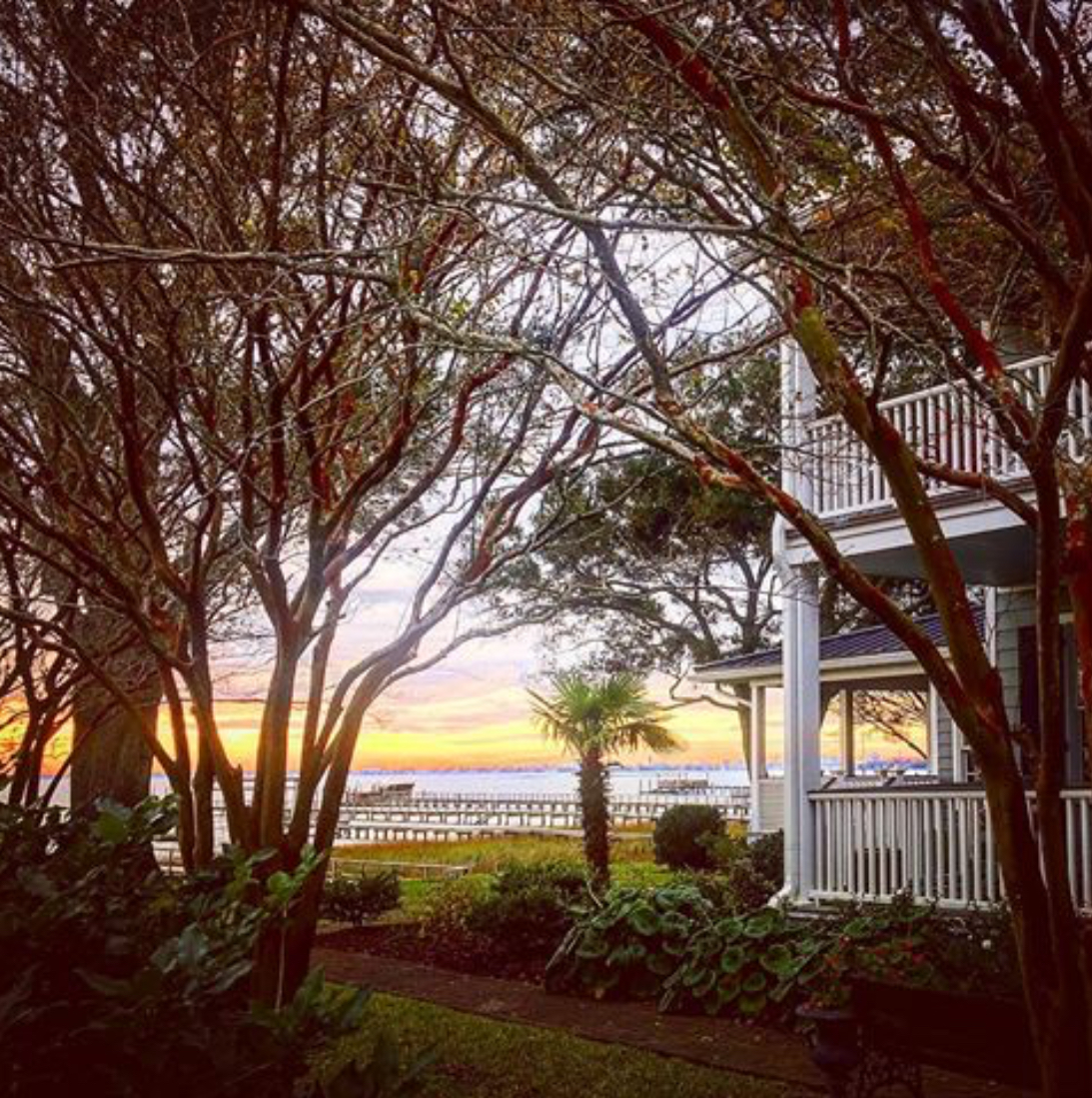Old Village and Shem Creek a Background

Old Village Historic District
English Villages
Several English style villages developed along the Charleston Harbor, east of the Cooper River, around the time that Charleston was established. This area offered cool breezes and abundant resources for the colonial families who chose to settle here. Learn more.
Village of Mount Pleasant
The charming village of Mount Pleasant was laid out by James Hibben in 1803 and took its name from one of the area’s eighteenth century plantations.The original Mount Pleasant plantation house, known today as the Hibben House, still stands in the Old Village.
Read about the Old Village Historic District and view the map.
Village Incorporation
The Town of Mount Pleasant was established by the incorporation of five delightful English villages that developed close to Shem Creek along the harbor. Those villages were: Greenwich Village (est.1766); Hibben Ferry Tract (est. 1770); Mount Pleasant Plantation (est.1808); Hilliardsville (est.1847); and Lucasville (est.1853). Learn more.
Try the Moultrie Middle School Old Village Historic District Walking Tour.
Shem Creek
Traditional Harbor
Shem Creek is a tidal tributary that possesses a rich history as the traditional harbor of local residents for over 300 years. In the distant past this waterway had several names such as Sullivan’s, Dearsley’s, Parris, and Lempriere’s. Its current name probably stems from the Indian word “Shemee.” This deepwater creek bounds Mount Pleasant’s historic district on the north and enjoys a strategic location with direct access to the Charleston Harbor.
Lively Waterway
Shem Creek was a lively waterway in the eighteenth century. In 1706, Carolinians defeated the French during an attack at an area between Shem Creek and the Wando River. In 1740, there was a plantation and lime kiln on the creek. Inhabitants built a fort at the creek mouth for protection during the American Revolution. After the war, Jonathan Lucas constructed a prosperous mechanical rice mill and sawmill that was powered by the creek’s tides. In May 1791, after breakfasting at Snee Farm Plantation, President George Washington embarked a vessel on Shem Creek and traveled to Charleston.
Commercial Hub
Shem Creek has been the time-honored hub of life for Mount Pleasant residents since the first European settlers arrived. Through the centuries, this central waterway has given sustenance to the local people by supporting light industries, mills, factories, and commercial fishing, shrimping, oystering, and crabbing. Shem Creek has always been an important site for shipbuilding. A variety of vessels used for pleasure, racing, and commercial purposes have been constructed, housed, and launched at this harbor. The creek has supported industries and craftsmen related to the boatbuilding and repair business such as netmakers and sailmakers. Exotic businesses have operated here as well. In the late 1800s, locals prepared diamondback terrapin turtles for shipment to New York. Read more.
Visit Shem Creek Park
Old Village Historic Garden:Pierates Cruze
Substantial Seawall
Dana Osgood and his wife Laird Branch Osgood relocated from Hopewell, Massachusetts, in 1929, and purchased land in the Old Village. The Osgood’s land was originally a part of the Hilliardsville tract that was annexed by the town in 1858. They erected a very substantial concrete seawall along the entire length of the property that withstood numerous storms and several hurricanes. In the 1930s, the grounds were transformed into seven spectacular gardens called Pierates Cruze.
Seven Gardens
The gardens were named: “The Sea Garden,” “Wind’ll Blow,” Little Wheel,” “Twyfy’s Garden,” “Eight Bells, “Wiggins Walk,” and “Amalfi.” These gardens had plentiful varieties of flowers, shrubs, and trees, including thousands of prize-winning camellias and azaleas. The Osgoods opened Pierates Cruze to the public on February 20, 1943. The gardens were a popular tourist attraction in the 1940s and 1950s. In 1947, the Massachusetts Horticultural Society awarded Mrs. Osgood the prestigious “Gold Medal” for her development of new varieties of hybrid camellias.
Belled Wall
The gardens were closed in 1959. Two years later, after the Osgood’s deaths, the land was sold and subdivided into 13 lots. Lot #7, part of the Amalfi garden, was purchased in 1976. Amalfi’s original garden columns still remain on the lot and are reminiscent of an Italian mission structure. The belled wall was completely destroyed during Hurricane Hugo in 1989. However, the property owners reconstructed the wall from the original bricks and replaced the bells with ship bells.
Alhambra Garden Club of Mount Pleasant, SC
Promoting beautification, conservation, and education
Bibliographic Summary: Petrona Royall McIver, History of Mount Pleasant South Carolina (Mount Pleasant: Mount Pleasant Town Council, 1960), reprinted by the Christ Church Parish Preservation Society, 1-35; Mary Julia C. Royall, Images of America: Mount Pleasant: The Victorian Village (Mount Pleasant: Arcadia Publishing, 1997), Introduction.
https://www.tompsc.com/241/Old-Village-Historical-District






